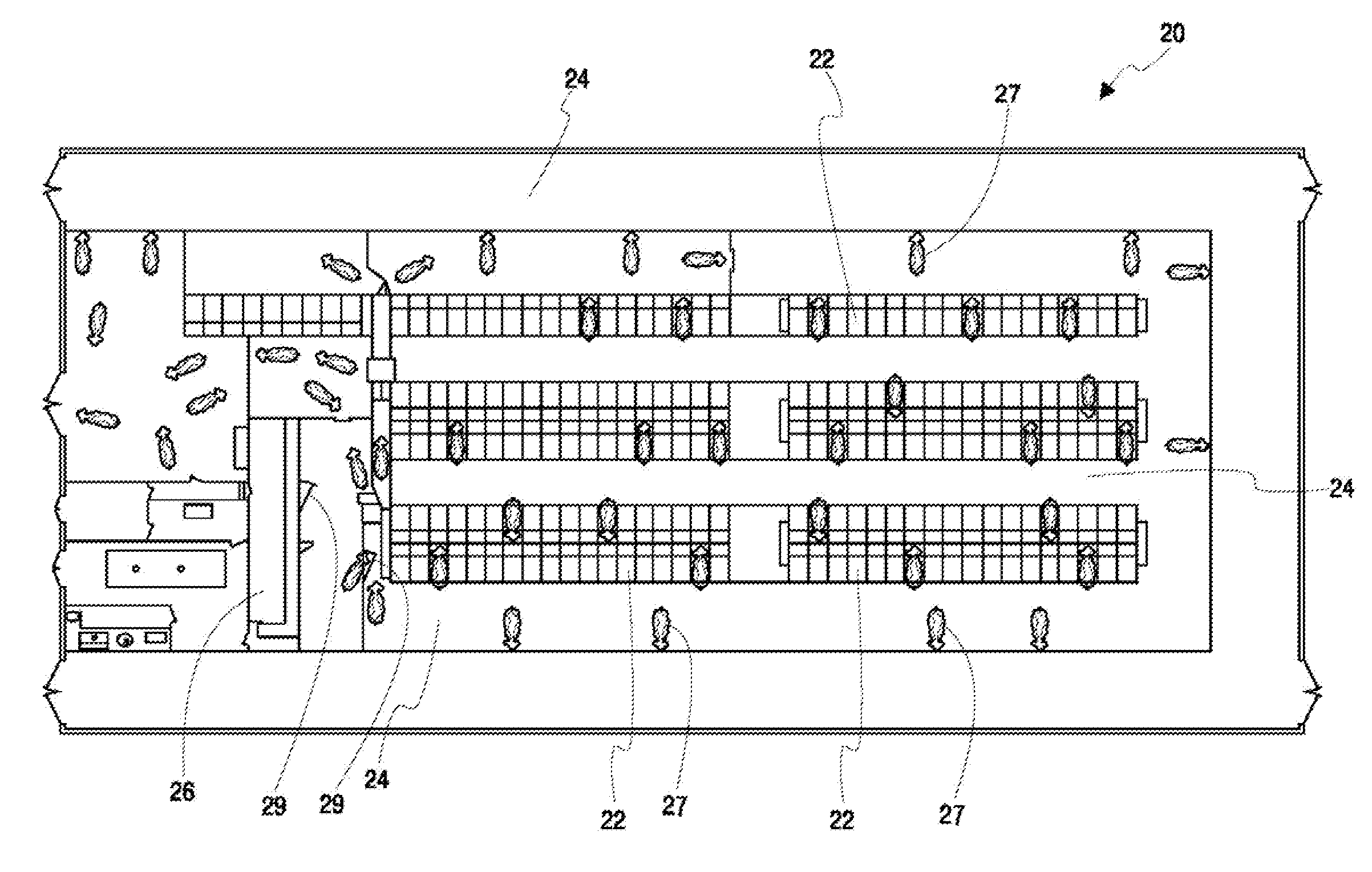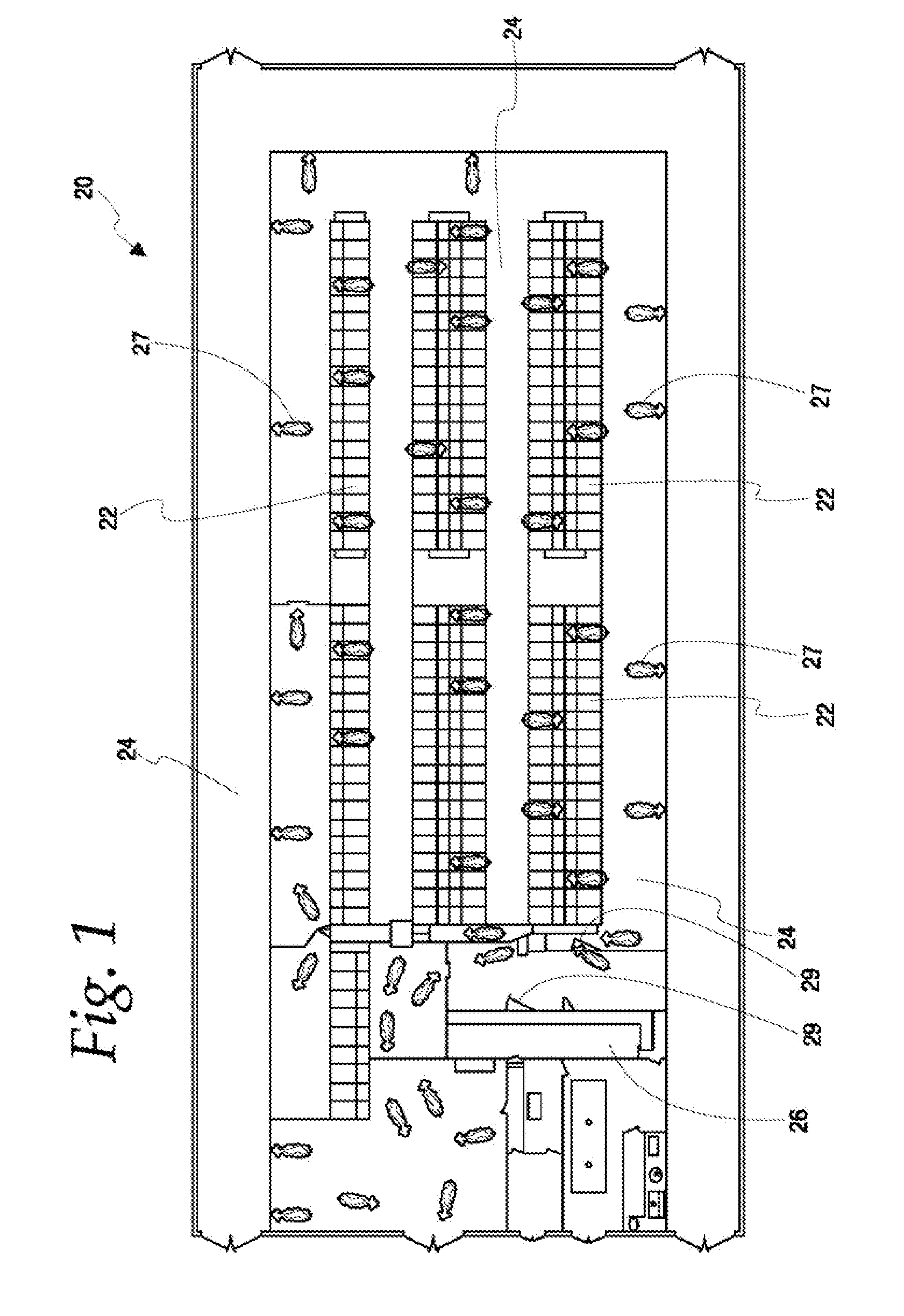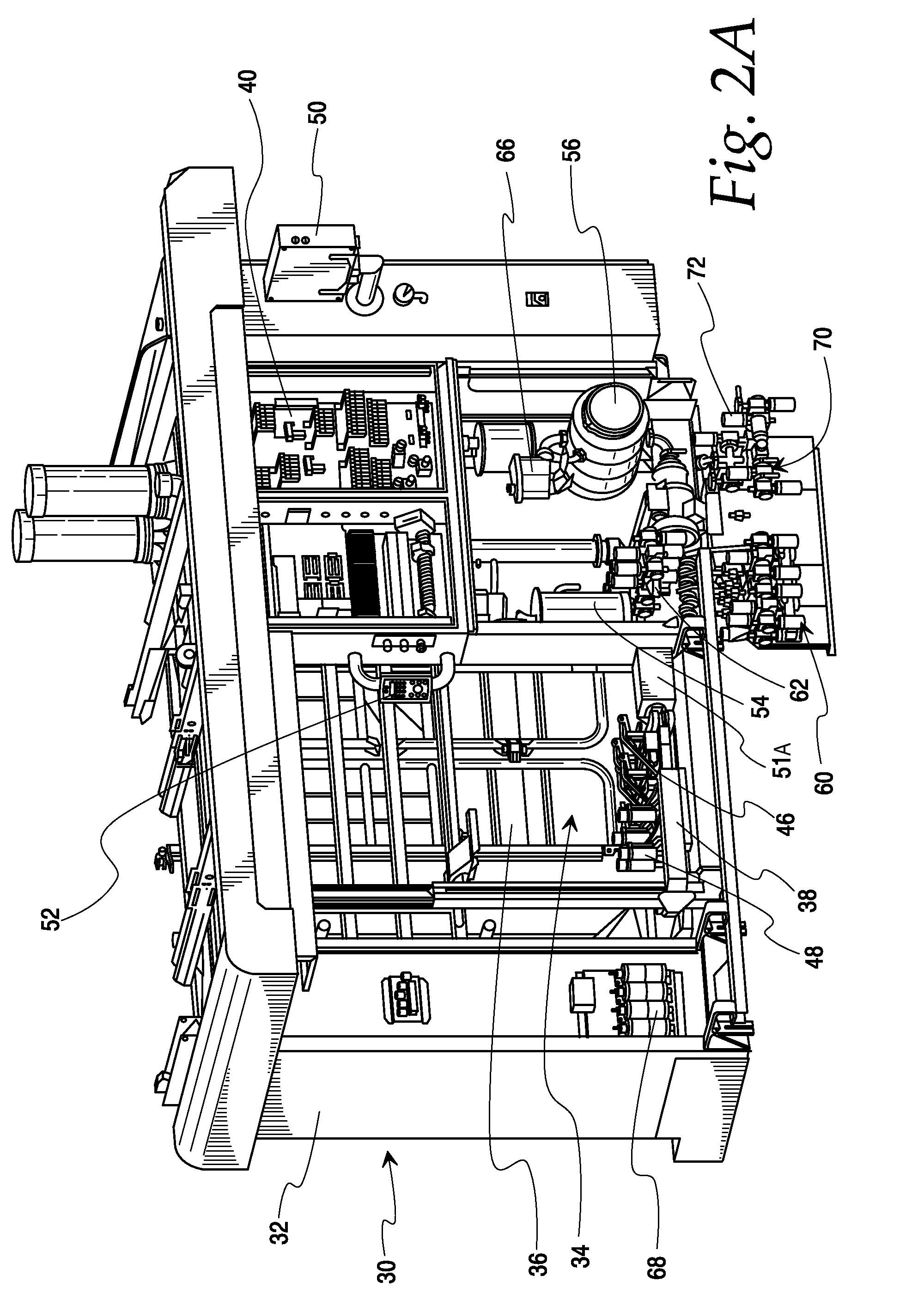Dairy harvesting facility with milk line protection system and methods
a protection system and milk line technology, applied in the field of dairy harvesting facilities, can solve the problems of milking system being a possible source of contamination, waste of valuable time, and affecting the quality of milking,
- Summary
- Abstract
- Description
- Claims
- Application Information
AI Technical Summary
Benefits of technology
Problems solved by technology
Method used
Image
Examples
Embodiment Construction
[0079]To the extent reasonable and practical, the same identification numeral will be used to identify the same or similar feature in each of the figures.
[0080]Illustrated generally in FIG. 1 is a dairy harvesting facility 20 having stalls 22, alleys 24, and milking stalls 26. Dairy animals 27 move through the dairy harvesting facility 20 to feed, rest, and be milked in the milking stalls 26. Control gates 29 can be used to sort cows or to prevent them from entering a particular area. Preferably, an animal identification system is used to identify cows for sorting and correlating to milk, illness, and other purposes.
[0081]The milking stalls 26 can be of any shape or arrangement, and be stationary or rotatable. Animals can be allowed to enter the milking stalls at will or be controlled by gates 29 that are selective based on the animal's history of milking or health considerations. Animals can also be moved into the milking stalls 26 by an operator.
[0082]In a preferred embodiment of ...
PUM
 Login to View More
Login to View More Abstract
Description
Claims
Application Information
 Login to View More
Login to View More - R&D
- Intellectual Property
- Life Sciences
- Materials
- Tech Scout
- Unparalleled Data Quality
- Higher Quality Content
- 60% Fewer Hallucinations
Browse by: Latest US Patents, China's latest patents, Technical Efficacy Thesaurus, Application Domain, Technology Topic, Popular Technical Reports.
© 2025 PatSnap. All rights reserved.Legal|Privacy policy|Modern Slavery Act Transparency Statement|Sitemap|About US| Contact US: help@patsnap.com



